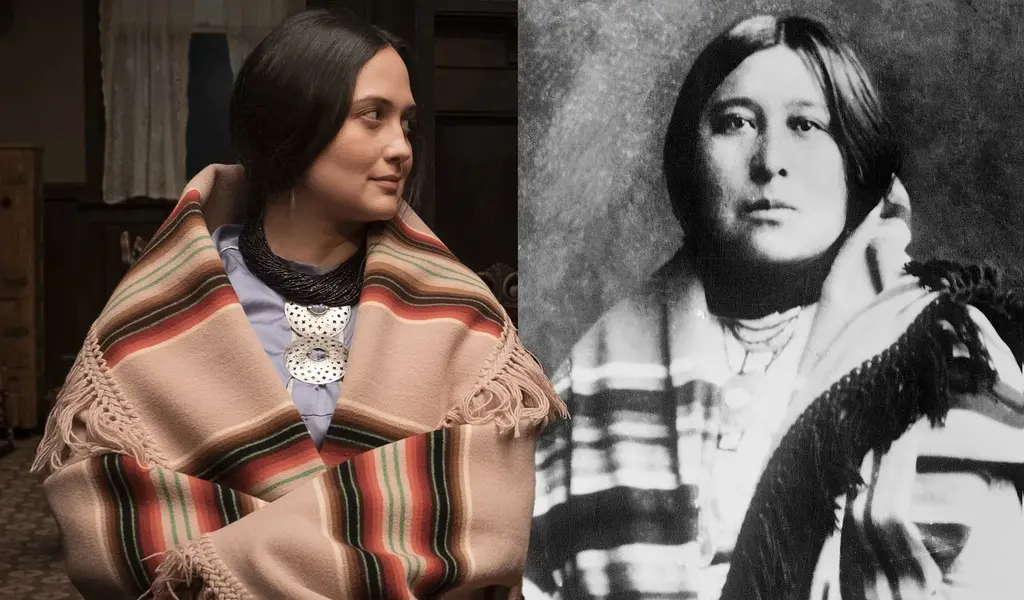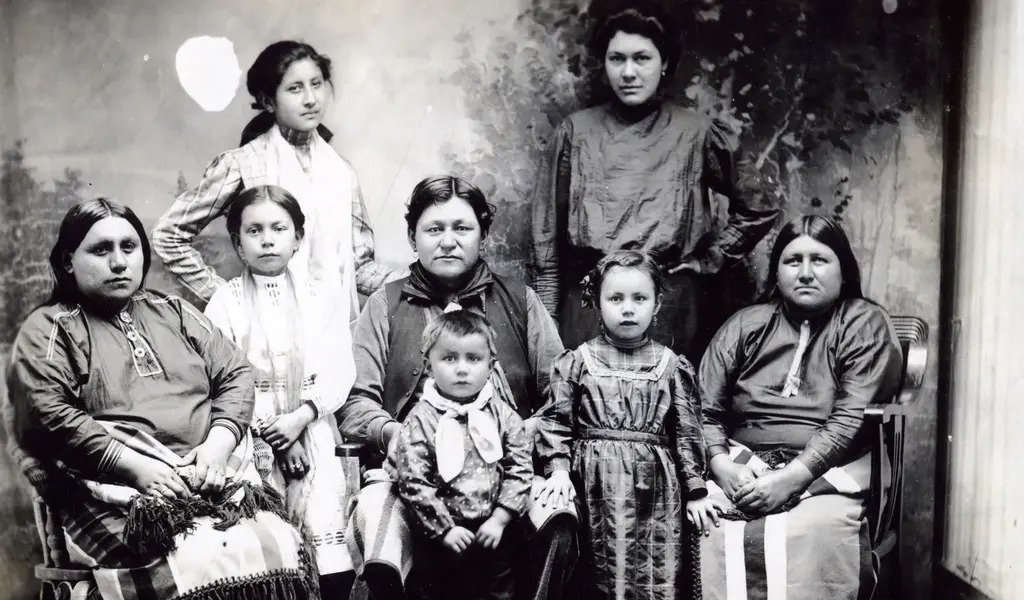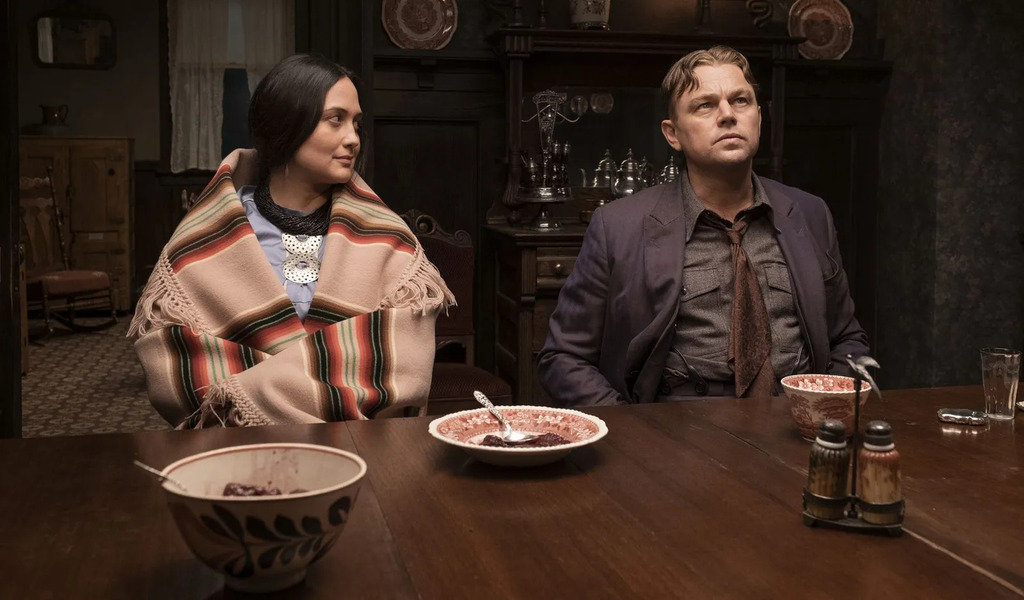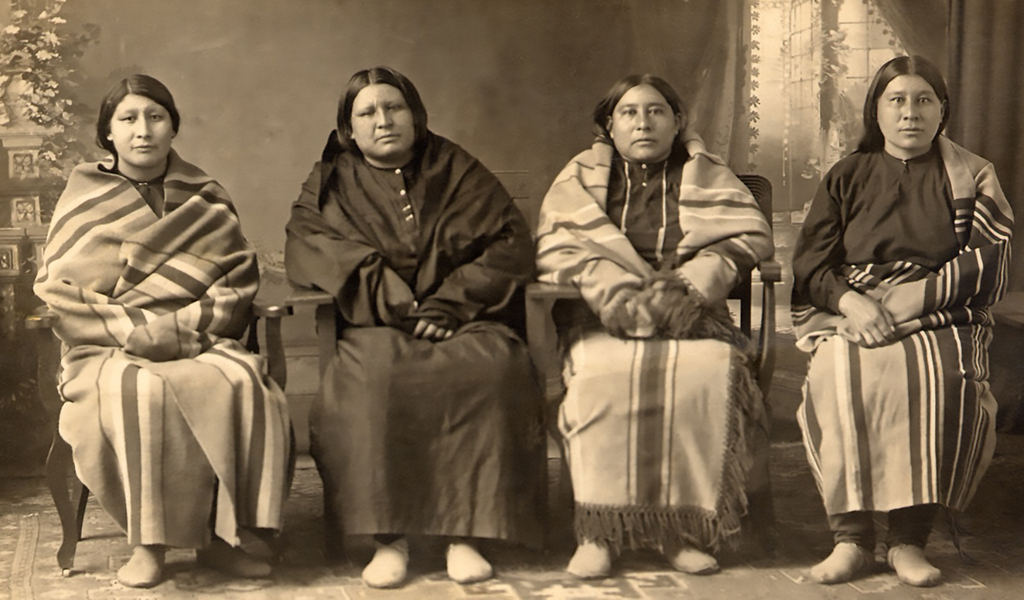News
“Killers Of The Flower Moon”: The Hidden History Of The Near-Erased Osage Murders

(CTN NEWS) – “Killers of the Flower Moon,” directed by Martin Scorsese and starring Leonardo DiCaprio, Robert De Niro, and Lily Gladstone, delves into a haunting chapter of American history.
The film, set to release this week, is inspired by a deeply troubling true story.
The theme of forgotten or erased history, particularly concerning the injustices faced by Native American communities, has been gaining attention in recent years.
In “Killers of the Flower Moon,” the line uttered by Robert De Niro’s character, “They won’t remember,” reflects the belief that the Osage Nation’s tragic history would be forgotten.
The brutal murders of wealthy Osage people during the early 1920s were systematically concealed.
David Grann’s book, “Killers of the Flower Moon: The Osage Murders and the Birth of the FBI,” which inspired the film, helped bring this dark chapter of history back into the mainstream.
Grann notes that many readers expressed their astonishment at never having learned about these events, which reflects the underlying prejudice that led to these crimes.
This oversight in recognizing and acknowledging the injustices faced by Native Americans is part of a larger issue in US culture.
The dispossession of Native American land played a central role in the formation of American democracy.
While African American slavery is increasingly recognized as central to American history, Native American experiences have often been overlooked.
Scholars like Ned Blackhawk aim to rectify this by restoring Native American injustices to their rightful place in the narrative of American history.

At the heart of “Killers of the Flower Moon,” both in the book and film, is the character Mollie Burkhart, portrayed by Lily Gladstone.
Mollie is a modest yet oil-rich Osage woman whose family was specifically targeted during the Osage murder conspiracy.
Her sister was shot to death, another had her house firebombed, and their mother was likely poisoned. Later, Mollie herself fell mysteriously and gravely ill.
Her true story exemplifies the cultural environment that allowed the “Reign of Terror” to occur and then be brushed aside.
The dispossession of Native American land began with Columbus and continued for centuries.
In the 19th century, the US government forced the Osage people off their land in Kansas, and they subsequently moved to Oklahoma, where the discovery of oil made them incredibly wealthy, becoming the world’s richest people per capita at that time.
Despite their newfound wealth, the US government often labeled Indigenous people as “incompetent,” a designation that hinged on their Native heritage.
Guardians, frequently corrupt, were appointed to oversee and restrict how those labeled as “incompetent” could spend their own money.
The film highlights the injustice of this practice as we see Mollie meeting with a guardian, even though she is highly intelligent and capable.
The film, like the book, masterfully captures Mollie’s deeply personal narrative and the cultural prejudice that allowed these heinous crimes to transpire.
In the early 1920s, William Hale, a prominent figure in Osage County, represented a venal man who considered Native Americans as subhuman while pretending to be the tribe’s friend and benefactor.
Hale encourages his equally greedy nephew, Ernest Burkhart, a World War I veteran portrayed by Leonardo DiCaprio, to marry Mollie.
The film deliberately leaves viewers questioning whether Ernest truly loves her, is marrying for her wealth, or is driven by a combination of motives, a question that becomes increasingly significant in Mollie’s life as well.

Martin Scorsese’s film employs mock archival newsreels to illustrate the perplexed resentment of white society towards the wealthy Osage people, who were chauffeured and adorned in fashionable furs and jewels.
Mollie Burkhart, in contrast, wore a traditional blanket as a coat and lived a simple life despite her opulent house and servants.
Nevertheless, David Grann’s book references a 1920 article in Harper’s Monthly Magazine titled “Lo, the Rich Indian!” which remarks on the peculiarity of “red millionaires.”
In 1922, a travel magazine featured a typical article called “Our Plutocratic Osage Indians.” These historical documents highlight the fascination and sometimes disdain with which Osage wealth was viewed by the white population of that time.
Increased Public Awareness
Many white individuals married into the Osage tribe, often with sinister intentions.
The US government allotted parcels of Oklahoma land to the Osage, and tribe members retained the rights to profit from the oil found on their land, known as headrights.
Importantly, these headrights could only be inherited, not sold. Marrying an Osage person with headrights was a way for white individuals to gain access to the oil money.
This devious tactic involved feigning love for an Osage individual while simultaneously plotting to kill them, as depicted in Scorsese’s film.
William Hale, the film’s main antagonist, openly expresses the view that the Osage are undeserving of their wealth and, eventually, their lives.
Hale was not the sole perpetrator. “The more I dug into it, the more I realised this was really about a culture of killing and a culture of complicity,” says David Grann.
He found evidence of doctors administering poison, morticians covering up bullet wounds, and guardians, lawmen, and prosecutors who either failed to investigate these crimes or may have played a role in them.
Many others were complicit through their silence. The Reign of Terror against the Osage Nation involved a vast network of individuals, including both those who committed the murders and those who enabled them.

The film effectively portrays the real-life culture of white supremacy prevalent during that era.
It briefly alludes to the nearby Tulsa Race Massacre of 1921, which coincided with the Osage murders.
The Tulsa Race Massacre involved the destruction of the prosperous Black Wall Street neighborhood by a white mob.
In the film, there’s a parade on the main street of the Burkharts’ town, featuring robed and hooded Ku Klux Klan members marching directly behind a group of women carrying a banner that reads “Indian Mothers of Veterans.”
This scene starkly illustrates the deeply entrenched nature of white supremacy in society at that time.
As the Osage murders continued to mount, the FBI began its investigation, and the story gained national attention.
When William Hale was convicted of a single murder, the headline in The New York Times was telling in its focus on the white criminals rather than their Native victim: ‘King of Osage Hills‘ Guilty of Murder: Hale, Cattleman, and a Cowboy Are Convicted of Killing an Indian.
This headline reflects the racial bias and the devaluation of Native lives during that period.
The virtual disappearance of the story can be attributed to various factors, but it reflects the broader treatment of Native Americans and indigenous history in the United States.
Tara Damron, a member of the Osage Nation and program director at the White Hair Memorial, which houses Osage history, emphasizes that indigenous history has been overlooked and silenced.
Native American voices and perspectives have not been adequately included or taught.
Indigenous tribes have a government-to-government relationship with the United States established through treaties, and the Osage People’s experiences during this dark period are an integral part of American history.
According to Damron, this story needs to be told, as it highlights the historical injustices and the legacy of violence against Native Americans that should not be forgotten.

The story of “Killers of the Flower Moon” in both its book and film forms is part of a larger cultural reclamation.
In recent years, there have been positive developments regarding the treatment of Native American communities.
In 2011, the U.S. government settled a lawsuit with the Osage Nation, agreeing to pay $380 million to address the mismanagement of the tribe’s funds.
This settlement was seen as a step towards reconciliation and empowerment for Native American nations, and it reflects a commitment to addressing past injustices.
Another significant development is the appointment of Deb Haaland as the first Native American cabinet secretary, serving as the Secretary of the Interior.
This appointment signals a change in leadership and a recognition of the importance of Native American voices in government.
However, some injustices can never be fully redressed. Many Osage murders that were not investigated or solved in the past may remain unsolved, as witnesses have passed away, and records of these crimes were often not well-documented.
Despite these challenges, works like “Killers of the Flower Moon” shed light on these historical injustices and help ensure that they are remembered.
Tara Damron, a member of the Osage Nation, has observed increased public awareness of the Osage murders since the book’s publication, and she hopes that this awareness will lead to meaningful cultural change and impact in the future.
MORE RELATED NEWS:
Where Is Al-Ahli Arab Hospital In Gaza, The Site Of The Recent Attack Amidst The Israel Conflict?
Terror Strikes Sweden: Shocking Truth Behind Recent Attacks And Freedom Of Speech Debate
China’s Belt And Road Initiative (BRI) Adapts Towards Smaller And Greener Projects
News
Trudeau’s Gun Grab Could Cost Taxpayers a Whopping $7 Billion

A recent report indicates that since Trudeau’s announcement of his gun buyback program four years ago, almost none of the banned firearms have been surrendered.
The federal government plans to purchase 2,063 firearm models from retailers following the enactment of Bill C-21, which amends various Acts and introduces certain consequential changes related to firearms. It was granted royal assent on December 15 of last year.
This ban immediately criminalized the actions of federally-licensed firearms owners regarding the purchase, sale, transportation, importation, exportation, or use of hundreds of thousands of rifles and shotguns that were previously legal.
The gun ban focused on what it termed ‘assault-style weapons,’ which are, in reality, traditional semi-automatic rifles and shotguns that have enjoyed popularity among hunters and sport shooters for over a century.
In May 2020, the federal government enacted an Order-in-Council that prohibited 1,500 types of “assault-style” firearms and outlined specific components of the newly banned firearms. Property owners must adhere to the law by October 2023.
Trudeau’s Buyback Hasn’t Happened
“In the announcement regarding the ban, the prime minister stated that the government would seize the prohibited firearms, assuring that their lawful owners would be ‘grandfathered’ or compensated fairly.” “That hasn’t happened,” criminologist Gary Mauser told Rebel News.
Mauser projected expenses ranging from $2.6 billion to $6.7 billion. The figure reflects the compensation costs amounting to $756 million, as outlined by the Parliamentary Budget Office (PBO).
“The projected expenses for gathering the illegal firearms are estimated to range from $1.6 billion to $7 billion.” “This range estimate increases to between $2.647 billion and $7 billion when compensation costs to owners are factored in,” Mauser stated.
Figures requested by Conservative MP Shannon Stubbs concerning firearms prohibited due to the May 1, 2020 Order In Council reveal that $72 million has been allocated to the firearm “buyback” program, yet not a single firearm has been confiscated to date.
In a recent revelation, Public Safety Canada disclosed that the federal government allocated a staggering $41,094,556, as prompted by an order paper question from Conservative Senator Don Plett last September, yet yielded no tangible outcomes.
An internal memo from late 2019 revealed that the Liberals projected their politically motivated harassment would incur a cost of $1.8 billion.
Enforcement efforts Questioned
By December 2023, estimates from TheGunBlog.ca indicate that the Liberals and RCMP had incurred or were responsible for approximately $30 million in personnel expenses related to the enforcement efforts. The union representing the police service previously stated that the effort to confiscate firearms is a “misdirected effort” aimed at ensuring public safety.
“This action diverts crucial personnel, resources, and funding from tackling the more pressing and escalating issue of criminal use of illegal firearms,” stated the National Police Federation (NPF).
The Canadian Sporting Arms & Ammunition Association (CSAAA), representing firearms retailers, has stated it will have “zero involvement” in the confiscation of these firearms. Even Canada Post held back from providing assistance due to safety concerns.
The consultant previously assessed that retailers are sitting on almost $1 billion worth of inventory that cannot be sold or returned to suppliers because of the Order-In-Council.
“Despite the ongoing confusion surrounding the ban, after four years, we ought to be able to address one crucial question.” Has the prohibition enhanced safety for Canadians? Mauser asks.
Illegally Obtained Firearms are the Problem
Statistics Canada reports a 10% increase in firearm-related violent crime between 2020 and 2022, rising from 12,614 incidents to 13,937 incidents. In that timeframe, the incidence of firearm-related violent crime increased from 33.7 incidents per 100,000 population in 2021 to 36.7 incidents the subsequent year.
“This marks the highest rate documented since the collection of comparable data began in 2009,” the criminologist explains.
Supplementary DataData indicates that firearm homicides have risen since 2020. “The issue lies not with lawfully-held firearms,” Mauser stated.
Firearms that have been banned under the Order-in-Council continue to be securely stored in the safes of their lawful owners. The individuals underwent a thorough vetting process by the RCMP and are subject to nightly monitoring to ensure there are no infractions that could pose a risk to public safety.
“The firearms involved in homicides were seldom legally owned weapons wielded by their rightful owners,” Mauser continues. The number of offenses linked to organized crime has surged from 4,810 in 2016 to a staggering 13,056 in 2020.
“If those in power … aim to diminish crime and enhance public safety, they ought to implement strategies that effectively focus on offenders and utilize our limited tax resources judiciously to reach these objectives,” he stated.
Related News:
Millennials in Canada Have Turned their Backs on Justin Trudeau
Millennials in Canada Have Turned their Backs on Justin Trudeau
News
Google’s Search Dominance Is Unwinding, But Still Accounting 48% Search Revenue

Google is so closely associated with its key product that its name is a verb that signifies “search.” However, Google’s dominance in that sector is dwindling.
According to eMarketer, Google will lose control of the US search industry for the first time in decades next year.
Google will remain the dominant search player, accounting for 48% of American search advertising revenue. And, remarkably, Google is still increasing its sales in the field, despite being the dominating player in search since the early days of the George W. Bush administration. However, Amazon is growing at a quicker rate.
Google’s Search Dominance Is Unwinding
Amazon will hold over a quarter of US search ad dollars next year, rising to 27% by 2026, while Google will fall even more, according to eMarketer.
The Wall Street Journal was first to report on the forecast.
Lest you think you’ll have to switch to Bing or Yahoo, this isn’t the end of Google or anything really near.
Google is the fourth-most valued public firm in the world. Its market worth is $2.1 trillion, trailing just Apple, Microsoft, and the AI chip darling Nvidia. It also maintains its dominance in other industries, such as display advertisements, where it dominates alongside Facebook’s parent firm Meta, and video ads on YouTube.
To put those “other” firms in context, each is worth more than Delta Air Lines’ total market value. So, yeah, Google is not going anywhere.
Nonetheless, Google faces numerous dangers to its operations, particularly from antitrust regulators.
On Monday, a federal judge in San Francisco ruled that Google must open up its Google Play Store to competitors, dealing a significant blow to the firm in its long-running battle with Fortnite creator Epic Games. Google announced that it would appeal the verdict.
In August, a federal judge ruled that Google has an illegal monopoly on search. That verdict could lead to the dissolution of the company’s search operation. Another antitrust lawsuit filed last month accuses Google of abusing its dominance in the online advertising business.
Meanwhile, European regulators have compelled Google to follow tough new standards, which have resulted in multiple $1 billion-plus fines.

Pixa Bay
Google’s Search Dominance Is Unwinding
On top of that, the marketplace is becoming more difficult on its own.
TikTok, the fastest-growing social network, is expanding into the search market. And Amazon has accomplished something few other digital titans have done to date: it has established a habit.
When you want to buy anything, you usually go to Amazon, not Google. Amazon then buys adverts to push companies’ products to the top of your search results, increasing sales and earning Amazon a greater portion of the revenue. According to eMarketer, it is expected to generate $27.8 billion in search revenue in the United States next year, trailing only Google’s $62.9 billion total.
And then there’s AI, the technology that (supposedly) will change everything.
Why search in stilted language for “kendall jenner why bad bunny breakup” or “police moving violation driver rights no stop sign” when you can just ask OpenAI’s ChatGPT, “What’s going on with Kendall Jenner and Bad Bunny?” in “I need help fighting a moving violation involving a stop sign that wasn’t visible.” Google is working on exactly this technology with its Gemini product, but its success is far from guaranteed, especially with Apple collaborating with OpenAI and other businesses rapidly joining the market.
A Google spokeswoman referred to a blog post from last week in which the company unveiled ads in its AI overviews (the AI-generated text that appears at the top of search results). It’s Google’s way of expressing its ability to profit on a changing marketplace while retaining its business, even as its consumers steadily transition to ask-and-answer AI and away from search.

Google has long used a single catchphrase to defend itself against opponents who claim it is a monopoly abusing its power: competition is only a click away. Until recently, that seemed comically obtuse. Really? We are going to switch to Bing? Or Duck Duck Go? Give me a break.
But today, it feels more like reality.
Google is in no danger of disappearing. However, every highly dominating company faces some type of reckoning over time. GE, a Dow mainstay for more than a century, was broken up last year and is now a shell of its previous dominance. Sears declared bankruptcy in 2022 and is virtually out of business. US Steel, long the foundation of American manufacturing, is attempting to sell itself to a Japanese corporation.
SOURCE | CNN
News
The Supreme Court Turns Down Biden’s Government Appeal in a Texas Emergency Abortion Matter.

(VOR News) – A ruling that prohibits emergency abortions that contravene the Supreme Court law in the state of Texas, which has one of the most stringent abortion restrictions in the country, has been upheld by the Supreme Court of the United States. The United States Supreme Court upheld this decision.
The justices did not provide any specifics regarding the underlying reasons for their decision to uphold an order from a lower court that declared hospitals cannot be legally obligated to administer abortions if doing so would violate the law in the state of Texas.
Institutions are not required to perform abortions, as stipulated in the decree. The common populace did not investigate any opposing viewpoints. The decision was made just weeks before a presidential election that brought abortion to the forefront of the political agenda.
This decision follows the 2022 Supreme Court ruling that ended abortion nationwide.
In response to a request from the administration of Vice President Joe Biden to overturn the lower court’s decision, the justices expressed their disapproval.
The government contends that hospitals are obligated to perform abortions in compliance with federal legislation when the health or life of an expectant patient is in an exceedingly precarious condition.
This is the case in regions where the procedure is prohibited. The difficulty hospitals in Texas and other states are experiencing in determining whether or not routine care could be in violation of stringent state laws that prohibit abortion has resulted in an increase in the number of complaints concerning pregnant women who are experiencing medical distress being turned away from emergency rooms.
The administration cited the Supreme Court’s ruling in a case that bore a striking resemblance to the one that was presented to it in Idaho at the beginning of the year. The justices took a limited decision in that case to allow the continuation of emergency abortions without interruption while a lawsuit was still being heard.
In contrast, Texas has been a vocal proponent of the injunction’s continued enforcement. Texas has argued that its circumstances are distinct from those of Idaho, as the state does have an exemption for situations that pose a significant hazard to the health of an expectant patient.
According to the state, the discrepancy is the result of this exemption. The state of Idaho had a provision that safeguarded a woman’s life when the issue was first broached; however, it did not include protection for her health.
Certified medical practitioners are not obligated to wait until a woman’s life is in imminent peril before they are legally permitted to perform an abortion, as determined by the state supreme court.
The state of Texas highlighted this to the Supreme Court.
Nevertheless, medical professionals have criticized the Texas statute as being perilously ambiguous, and a medical board has declined to provide a list of all the disorders that are eligible for an exception. Furthermore, the statute has been criticized for its hazardous ambiguity.
For an extended period, termination of pregnancies has been a standard procedure in medical treatment for individuals who have been experiencing significant issues. It is implemented in this manner to prevent catastrophic outcomes, such as sepsis, organ failure, and other severe scenarios.
Nevertheless, medical professionals and hospitals in Texas and other states with strict abortion laws have noted that it is uncertain whether or not these terminations could be in violation of abortion prohibitions that include the possibility of a prison sentence. This is the case in regions where abortion prohibitions are exceedingly restrictive.
Following the Supreme Court’s decision to overturn Roe v. Wade, which resulted in restrictions on the rights of women to have abortions in several Republican-ruled states, the Texas case was revisited in 2022.
As per the orders that were disclosed by the administration of Vice President Joe Biden, hospitals are still required to provide abortions in cases that are classified as dire emergency.
As stipulated in a piece of health care legislation, the majority of hospitals are obligated to provide medical assistance to patients who are experiencing medical distress. This is in accordance with the law.
The state of Texas maintained that hospitals should not be obligated to provide abortions throughout the litigation, as doing so would violate the state’s constitutional prohibition on abortions. In its January judgment, the 5th United States Circuit Court of Appeals concurred with the state and acknowledged that the administration had exceeded its authority.
SOURCE: AP
SEE ALSO:
Could Last-Minute Surprises Derail Kamala Harris’ Campaign? “Nostradamus” Explains the US Poll.
-

 News3 years ago
News3 years agoLet’s Know About Ultra High Net Worth Individual
-
Entertainment1 year ago
Mabelle Prior: The Voice of Hope, Resilience, and Diversity Inspiring Generations
-

 Health3 years ago
Health3 years agoHow Much Ivermectin Should You Take?
-

 Tech2 years ago
Tech2 years agoTop Forex Brokers of 2023: Reviews and Analysis for Successful Trading
-

 Lifestyles2 years ago
Lifestyles2 years agoAries Soulmate Signs
-

 Health2 years ago
Health2 years agoCan I Buy Ivermectin Without A Prescription in the USA?
-

 Movies2 years ago
Movies2 years agoWhat Should I Do If Disney Plus Keeps Logging Me Out of TV?
-

 Learning2 years ago
Learning2 years agoVirtual Numbers: What Are They For?

